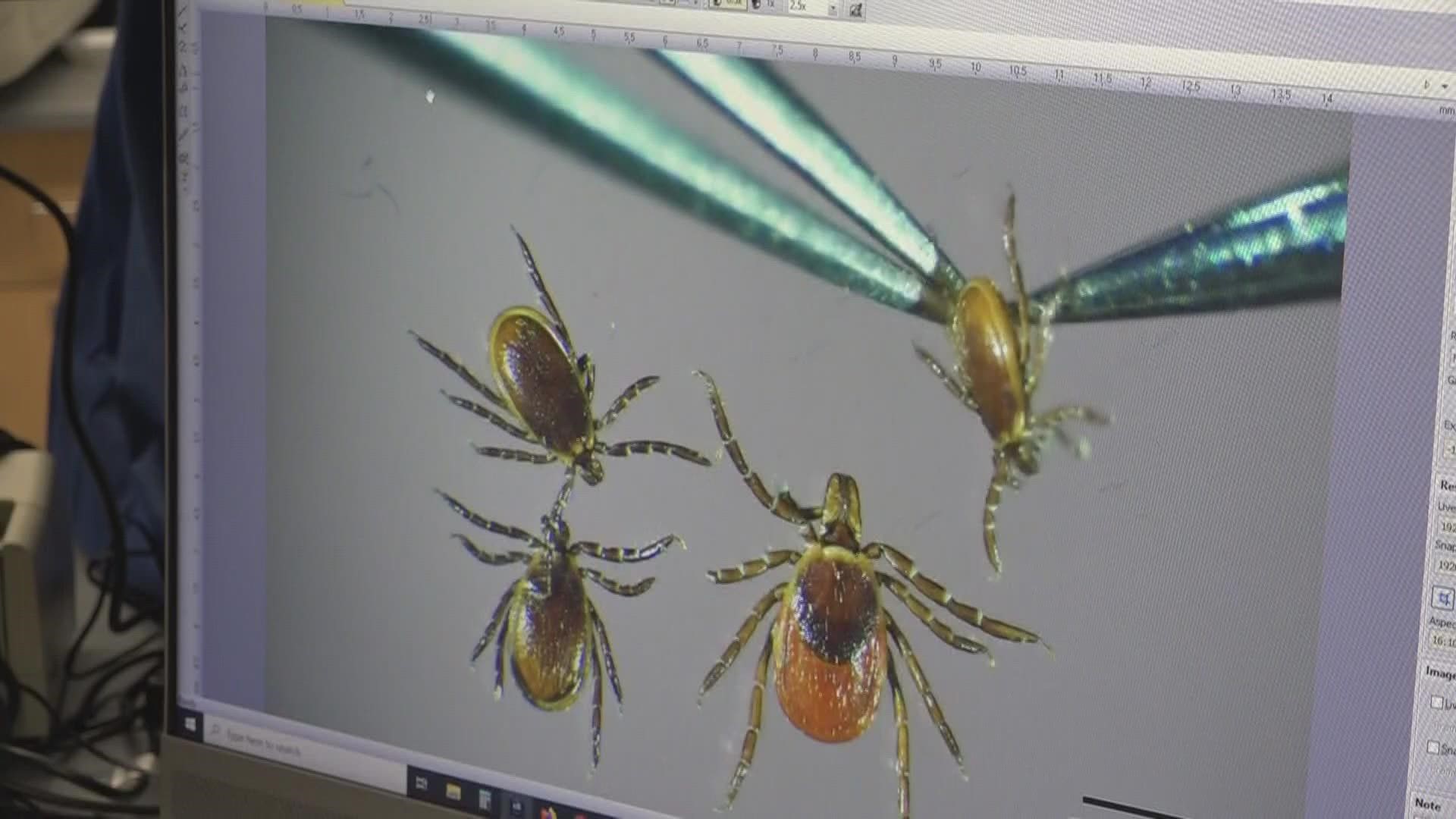ELIOT, Maine — University of Maine researchers are getting a better idea of where deer ticks are in Maine and what diseases they transmit.
Earlier this week, scientists released the latest data from ticks collected by landowners in nine counties, and it showed that a quarter of those ticks tested positive for Lyme disease. The data also are expected to help pinpoint why and where tick populations are thriving
Jill Ferrelli and her family love to hike the woods on their historic farmland Eliot, which covers 1,000 acres. But she worries about loved ones, especially her young granddaughter, contracting Lyme disease or other co-infections from black-legged or deer ticks.
"I want to make sure we know what's out here so if she does get bit we know what to look for," Ferrelli said.
Ferrelli spent the past two summers, dragging for ticks on her land.
After receiving online training, drag cloths, and tweezers, Ferrelli collected nymph ticks, which are very tiny and can be hard to spot on the body, in this area of the woods. In 2020, she found 45. The following year, she only found five.
"I dragged and dragged, and I spent extra dragging time" Ferrelli added.
As part of the 2021 University of Maine Tick Forest survey, 150 hundred property owners spread across nine southern and coastal counties in Maine.
Citizen scientists, who have been trained to report to researchers, collected nearly 2,400 deer ticks, up from 1,600 in 2020. Twenty-five percent of them carried the pathogens that cause Lyme disease, and the highest rates of ticks carrying Lyme were found in Cumberland, Lincoln, and Knox counties. The two-year project utilized nearly 300 citizen scientists, who were trained in self-reporting to researchers.
"Even though we collected a lot more ticks this past summer, the pathogen rates are about the same as those we collected in 2020," Ballman explained.
Elissa Ballman is the citizen science coordinator for the University of Maine Forest Tick Survey. She said wet, cooler weather last summer played a role in the higher number of ticks.
Like in 2020, the 2021 survey found there were significantly fewer black-legged ticks on timberland, harvested in the past 20 years. But that wasn't the case for properties with invasive plants, which can take over the forest floor and create favorable habitats for ticks.
"Properties that had the honeysuckle or barberry bush had significantly more ticks than those without," Ballman said.
Ferrilli said she wasn't sure why she found fewer ticks in an area of Maine considered a hotspot for tick activity. But knowing what ticks are questing on her land, she said she would take extra precautions to help keep her family safe.
Researchers are looking for ways to expand the project to all of Maine's 16 counties, but there is no plan yet to do the landowner survey next summer. The data collected will be included in a number of scientific reports that will be released sometime in the future.

